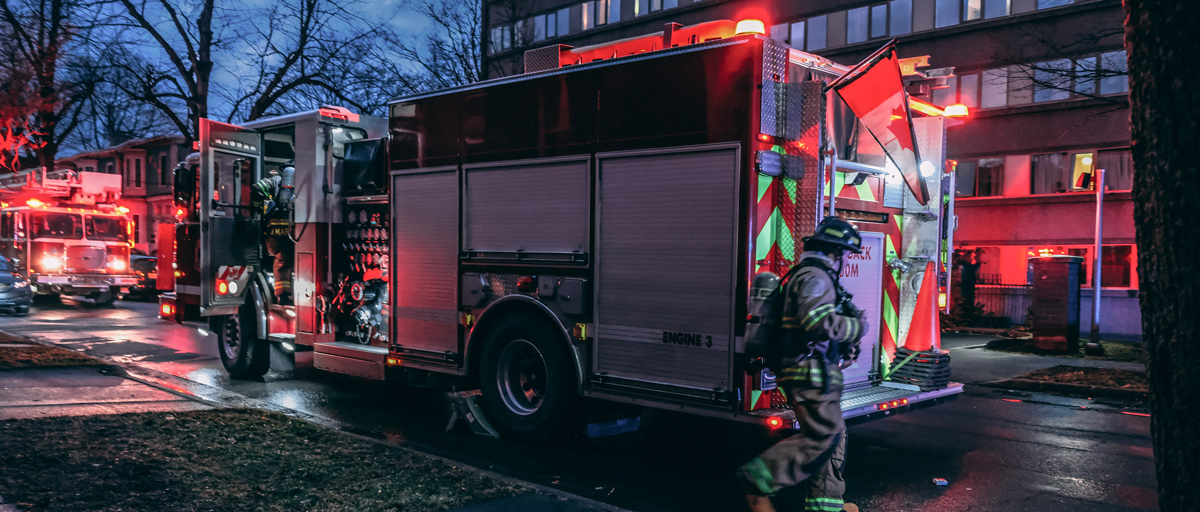Why Fire and EMS Facilities Rely on Emergency Generators

It’s 3:00am in a coastal town in New England. A hurricane that has been threatening to make landfall for a few days is now battering the shoreline with heavy rain and strong winds. Residents have been warned of the potential for flooding, and many have evacuated their homes until the storm passes. At the local fire department, first responders are gearing up to venture out into the storm and answer the calls for assistance. The lights flicker for a second as a tree falls onto a nearby power line, plunging the neighborhood into darkness. Instantly, the building’s emergency generator kicks on and restores the electricity inside, allowing the firefighters and EMS crew to operate throughout the storm and save lives.
Functions of An Emergency Power System
Often overlooked for its importance, a backup generator is a crucial piece of equipment for emergency services, capable of providing vital power in times of crisis. Used for more than just keeping the lights on, fire departments and EMS teams depend on generators so they can carry out a variety of functions. Discover some of the critical roles that an emergency power system fulfills.
Power High-Tech Devices
Much of the life-saving equipment that fire departments and EMS utilize requires electricity to operate. An emergency generator provides a reliable source of power for a range of medical devices like defibrillators and ventilators, which can mean the difference between life and death.
Maintain Communications
A reliable means of communication is essential for a coordinated relief effort. Emergency generators ensure that fire & EMS personnel are able to communicate with other units operating in the area and that information can be relayed quickly to and from the people who need it.
Create a Safe Environment
During a storm or large-scale disaster, fire departments and EMS facilities may function as emergency shelters for people in need. These buildings may be the only one in the area which still have power and heat, offering a lighted, comforting environment for families to take refuge in.
Provide Access to Critical Information
We live in a vastly digital world, where building plans and medical records alike are stored on computers and web-connected devices. Emergency generators keep these systems running, ensuring the information is accessible to those who need it, such as medical providers or firefighters planning rescue efforts.
Back-Up for Emergency Response Efforts
From powering life-saving equipment to providing a safe environment in an otherwise unsafe area, Fire and EMS facilities depend on emergency generators to kick on and power their operations when needed. Larger and more complex than residential and even commercial generators, these emergency generators need to turn on in less than 10 seconds and continuously provide up to full load in a moment’s notice until the electrical grid is restored without faltering. In locations where power loss could result in the loss of human lives, at a fire department or hospital for instance, there are legal requirements that determine the type of generator that must be installed, maintenance on the system, and how it must operate. NFPA 110 of the National Electrical Code (NEC) outlines the strict demands that all emergency power systems must meet.
Emergency Power System Requirements
- The emergency generator must be sized and rated appropriately for the location and level of power needed.
- The fuel source must be stored in a location and manner that prevents unnecessary fire risks.
- All emergency systems are required to automatically turn on in the case of an electrical outage in order to provide an uninterrupted source of power.
- These systems must be designed to operate independently from an outside power source, with their own wiring and panels.
- In medical and hospital settings, emergency generators are required to provide power to any vital medical equipment, such as ventilators and respirators.
- Emergency systems must provide power for any essential radio systems, such as in police and fire departments.
- The system has to be tested and maintained monthly and annually to ensure the generator’s integrity to perform reliably.
Municipalities Count on Tower Generator for Service They Can Trust
Since 1997, Tower Generator has worked with municipalities and emergency services, both small and large to install and maintain backup power systems for a variety of emergency response departments, including Torrington Emergency Management, the New Milford Fire & EMS, Westport Fire Department, Collinsville Fire Department, and community health care facilities in Hartford and New Britain. If you’re considering installing a new emergency generator or upgrading an existing unit, contact our team for a free on-site consultation. We’ll engineer a critical power system to meet your specific needs for your facility to provide continuous power for Fire and EMS emergency power requirements. Our specialists can also advise and educate on the latest code requirements for means of temporary alternate sources of power.


